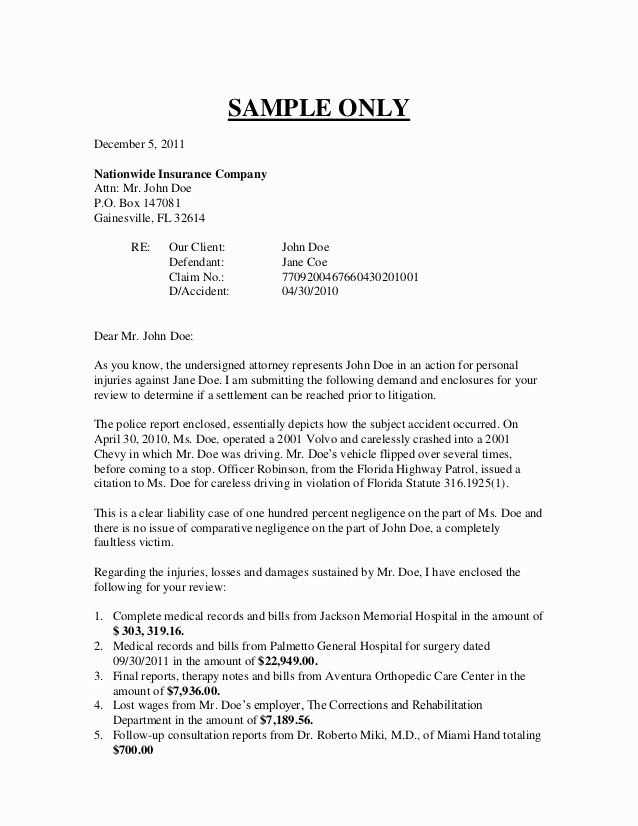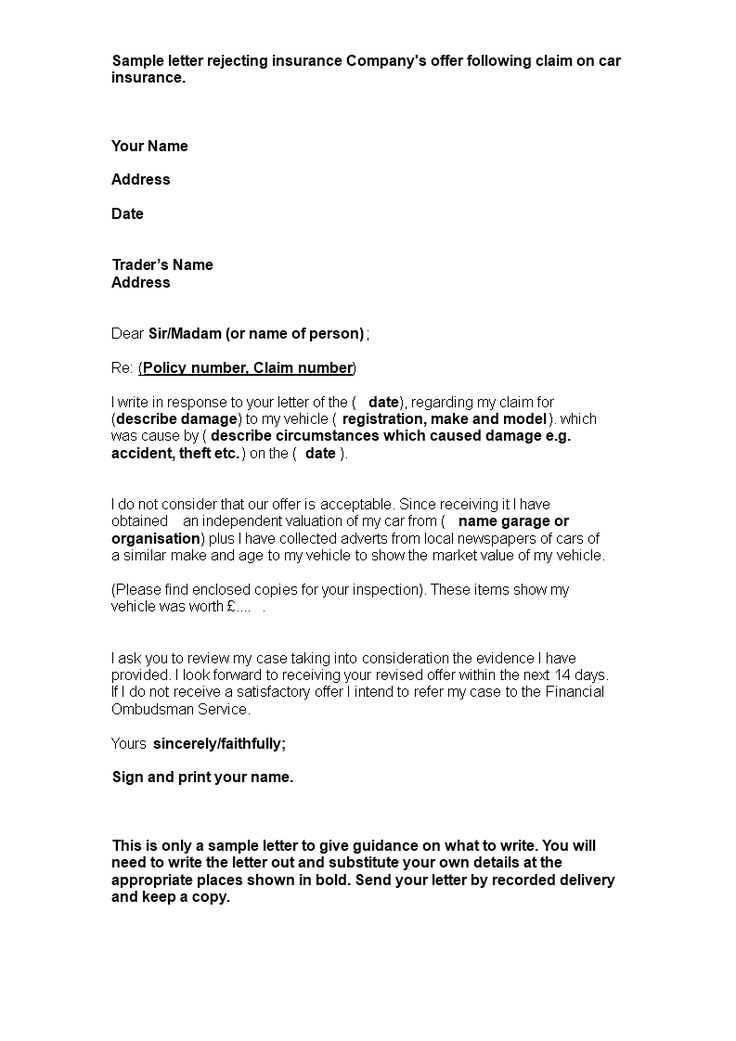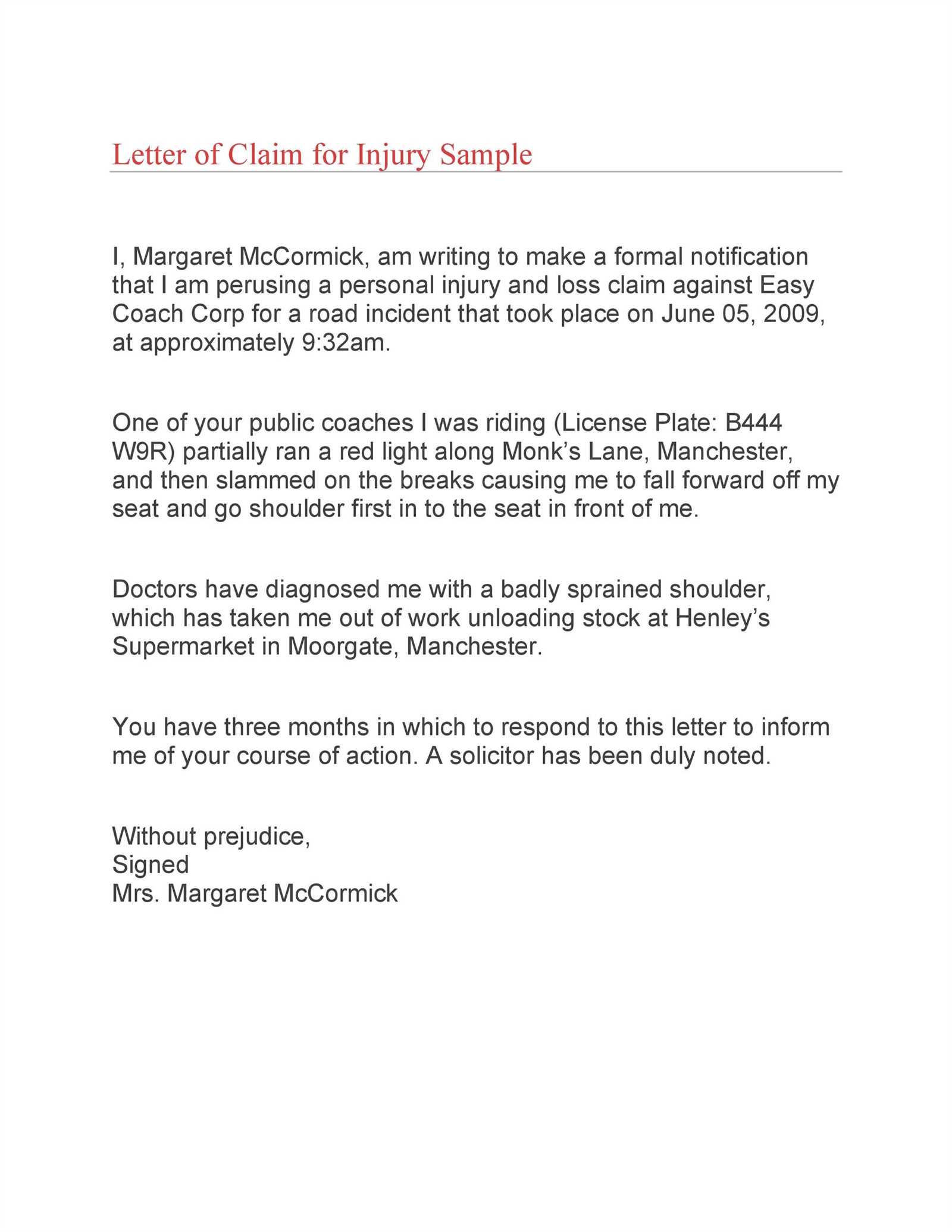Personal Injury Letter of Claim Template

When seeking compensation for damages, one of the first steps is communicating your grievance formally. A well-constructed letter can help you initiate the legal process, ensuring your case is taken seriously and reviewed properly. Whether you’re seeking reimbursement for medical bills or other losses, it’s crucial to express your claim clearly and professionally.
Creating an effective document requires attention to detail. It should outline the incident, specify the damages, and provide a reasonable resolution request. Using a clear structure and proper language will enhance your chances of a successful outcome, as it conveys professionalism and preparedness.
In this guide, we’ll cover the essential elements of crafting an effective document to support your compensation request. From the format to the required details, you’ll learn how to structure your communication to meet legal standards and achieve the best results.
Understanding the Letter of Claim
To initiate a formal process of seeking compensation, it’s important to draft a professional document that clearly communicates your case. This written request serves as an official way to inform the other party of your intention to pursue a legal remedy. Crafting a well-structured document is essential for ensuring your grievance is heard and handled correctly by the involved parties.
Purpose and Importance
The primary function of such a written request is to outline the details of the event, describe the harm caused, and specify what resolution or compensation you seek. This document acts as the first step in asserting your rights, and its clarity and structure can significantly impact the progress of the process.
- Establishes the basis of your complaint
- Outlines the damages or losses suffered
- Provides a clear request for action or compensation
- Sets a foundation for further legal proceedings if necessary
Key Elements to Include
For your request to be effective, it must contain the following core components:
- Detailed Account of the Event: A clear description of the incident that caused harm, including the date, location, and parties involved.
- Impact on You: An explanation of how the event has affected your well-being, both physically and financially.
- Requested Compensation: A clear statement of the compensation or resolution you are seeking, whether financial or otherwise.
- Timeframe for Response: A reasonable deadline for the recipient to respond to your request, indicating your seriousness and willingness to proceed further if necessary.
What is a Personal Injury Letter?
This document is an official way to communicate your desire for compensation after suffering harm due to another party’s actions or negligence. It serves as a formal notification to the responsible party, expressing your intent to resolve the matter and seek a remedy. This written communication outlines your case and presents the details in a clear and organized manner, helping the recipient understand your position and the steps you wish to take.
Purpose and Function
The main goal of this communication is to inform the other party of your grievance and request an appropriate resolution. It acts as the first step in the legal process, indicating that you are serious about your pursuit for redress. The letter must contain all relevant details to ensure the recipient fully understands your situation and the reason behind your request.
- Initiates the process of addressing the harm caused
- Outlines the facts and consequences of the incident
- Requests compensation or another form of redress
- Sets the stage for potential negotiations or further legal actions
Why is it Necessary?
Having this type of communication is essential for several reasons. It ensures that the responsible party is formally notified of the issue, establishing a record of your request. It also offers an opportunity for the recipient to respond and potentially resolve the matter before it escalates further. If no satisfactory resolution is reached, it serves as the groundwork for taking the next steps in pursuing legal action.
Key Elements to Include in Your Letter

To ensure that your written request is effective, it must contain several key components that clearly communicate your grievance and desired outcome. Including these elements will help provide a complete picture of the situation, making it easier for the recipient to understand the issue and respond appropriately. A well-organized and detailed document is essential for achieving a positive resolution.
- Incident Description: A clear and detailed account of what happened, including the date, location, and parties involved.
- Damages or Losses: A description of the harm you’ve suffered, whether it’s physical, emotional, or financial.
- Evidence: Any supporting documents, such as medical reports, photographs, or witness statements, that strengthen your case.
- Requested Resolution: A clear statement of what you are seeking, whether it’s monetary compensation or another form of remedy.
- Timeline: A reasonable deadline for the recipient to respond to your request, indicating the urgency of the matter.
Essential Information for a Solid Claim
When preparing to seek compensation for damages, it’s important to include specific details that will give your case strength and clarity. The more thorough your documentation, the more likely the responsible party will take your request seriously. This section covers the essential information that should be included to support your pursuit for a fair resolution.
Key Details to Include
Providing the correct and relevant details will help present your case in a structured manner. Make sure to include all necessary facts, evidence, and any other information that strengthens your position.
| Element | Description |
|---|---|
| Incident Information | A detailed account of the event, including time, place, and the individuals involved. |
| Evidence of Damages | Include medical records, repair bills, photos, or any other proof of the harm or loss sustained. |
| Witness Statements | If available, include statements from witnesses who can corroborate your account of the incident. |
| Requested Compensation | Clearly state the resolution you seek, whether financial or in another form. |
| Timeline | Indicate a reasonable timeframe for the other party to respond to your request. |
Why These Details Matter
Each element listed above plays a crucial role in providing the recipient with a complete understanding of your situation. It not only helps establish the facts but also shows that you’ve carefully considered the impact and the steps needed to resolve the matter. Proper documentation is key to moving forward effectively in any legal process.
How to Structure a Personal Injury Claim

To ensure your request for compensation is taken seriously, it’s important to present it in an organized and logical manner. A well-structured document not only makes your case clearer but also enhances the likelihood of a successful outcome. By following a simple, yet effective structure, you can communicate your points clearly and persuasively.
Step-by-Step Guide to Structuring Your Document
To create an impactful document, follow these essential steps:
- Introduction: Begin with a brief statement of the purpose of your communication. Clearly outline your intention to resolve the matter amicably and what you are seeking in return.
- Incident Overview: Provide a detailed description of the event that caused harm, including the date, location, and parties involved. Include any key facts that support your position.
- Damages: Explain how the event has affected you, both physically and financially. Include relevant documentation, such as medical reports or repair bills.
- Evidence: Attach or reference any evidence that supports your account, such as photographs, statements from witnesses, or expert opinions.
- Requested Outcome: Clearly state the compensation or resolution you are seeking. Be specific and reasonable in your request.
- Conclusion: Close with a polite request for a response within a set timeframe and indicate your willingness to take further action if needed.
Why Structure Matters
A clear structure helps ensure that your communication is both professional and effective. It guides the recipient through the essential information, making it easier for them to understand your situation. By presenting your case in an organized format, you demonstrate preparedness and a serious intent to seek a fair resolution.
Step-by-Step Guide to Drafting
Drafting an effective document to request compensation requires attention to detail and a clear understanding of the process. By following a well-defined series of steps, you can ensure that all necessary information is included and presented in a way that maximizes the chances of a favorable outcome. This guide will walk you through the essential stages of creating your communication.
Step 1: Prepare the Essentials
Before you begin writing, gather all relevant facts and documents. This includes details about the incident, your damages, and any supporting evidence you have, such as medical records or photos. Having everything on hand will make the drafting process smoother and more organized.
- Incident Details: Write a clear, concise description of the event, including the date, time, and parties involved.
- Supporting Evidence: Attach any documents or materials that support your case, such as reports, medical records, or photographs.
Step 2: Write the Document
Start drafting your communication with a clear and formal tone. Structure it logically, beginning with an introduction, followed by a description of the incident, and concluding with your requested resolution. Be precise but concise–avoid unnecessary details that don’t directly relate to your request.
- Introduction: Briefly state the purpose of your document and what you are seeking.
- Incident Description: Provide a detailed account of what happened, supporting it with facts and evidence.
- Resolution Request: Clearly specify what compensation or remedy you are seeking.
Ensure the tone remains professional and polite, even if the situation is frustrating. This will help maintain a constructive dialogue and demonstrate your seriousness in resolving the issue amicably.
Common Mistakes to Avoid in Claims
When seeking compensation for harm or damages, certain missteps can weaken your position or delay the process. It’s essential to be aware of these common errors to ensure your communication is clear, professional, and persuasive. Avoiding these mistakes will increase your chances of achieving a successful outcome in your case.
- Vague or Incomplete Information: Providing unclear or incomplete details can make it difficult for the other party to understand your position and may cause delays. Be specific and thorough in describing the incident and the damages you’ve suffered.
- Overstating or Understating Damages: Being overly exaggerated about the harm caused or understating it can undermine your credibility. Ensure that the damages you outline are accurate and supported by evidence.
- Failing to Provide Supporting Evidence: Neglecting to include relevant documentation, such as medical records, witness statements, or photos, can weaken your case. Always attach or reference any supporting evidence that can validate your claims.
- Not Setting a Clear Deadline: Without specifying a reasonable timeframe for a response, you may leave the process open-ended. Set a clear deadline for the recipient to reply, which demonstrates the seriousness and urgency of your request.
- Using an Aggressive or Rude Tone: While it’s important to be firm in your request, an overly aggressive or hostile tone can damage the possibility of a cooperative resolution. Keep the tone professional, respectful, and courteous throughout your communication.
Ensure Accuracy and Clarity

When communicating your request for compensation, it is crucial to present the facts in a clear and accurate manner. Inaccuracies or ambiguous statements can lead to misunderstandings and delays in processing your case. A well-structured and precise document can make a significant difference in how your grievance is handled and increase the likelihood of a positive resolution.
- Be Detailed: Provide a full account of the incident, including relevant dates, times, locations, and the parties involved. A clear timeline can help avoid confusion and highlight key facts.
- Avoid Ambiguity: Make sure your statements are specific. Instead of vague terms, use precise language that leaves little room for interpretation.
- Double-Check Facts: Verify all the facts presented in your communication, such as dates, medical records, or other supporting documents. Mistakes or discrepancies can weaken your case.
- Organize Information Clearly: Use a logical structure to present the facts. Break down your request into easy-to-follow sections, making it simple for the recipient to understand the key points.
Accurate and clear communication helps establish trust and demonstrates your professionalism, increasing the chances that your request will be treated seriously.